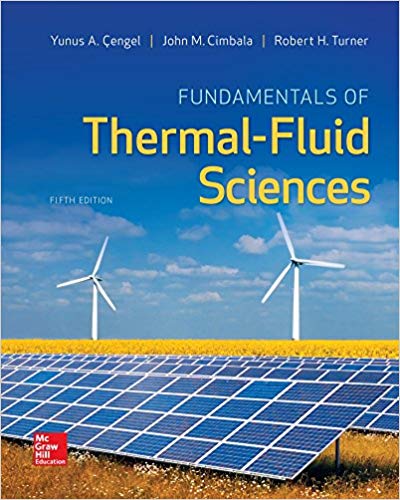A cylinder contains oxygen at a pressure of 2.00 atm. The volume is 4.00 L. and the
Question:
(a) Show these four processes in a pV-diagram, giving the numerical values of p and V in each of the four states.
(b) Calculate Q and W for each of the four processes.
(c) Calculate the net work done by the oxygen.
(d) What is the efficiency of this device as a heat engine? How does this compare to the efficiency of a Carnot Cycle engine operating between the same minimum and maximum temperatures of 250 K and 450 K?
Fantastic news! We've Found the answer you've been seeking!
Step by Step Answer:
Related Book For 

Fundamentals of Thermal-Fluid Sciences
ISBN: 978-0078027680
5th edition
Authors: Yunus A. Cengel, Robert H. Turner, John M. Cimbala
Question Posted:





